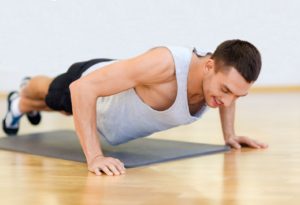Fitness and Wellness
How fitness health and wellness are interrelated
According to the World Health Organization, Fitness health and wellness and the normal active individual is one who practices some physical activity at least three times a week in his free time, with a minimum duration of 30 minutes.
The benefits of practicing sports for your health and well-being have already been scientifically proven. Gymnastics and walking are the most popular exercises. However, all physical activity that aims to contribute to the health of the individual is welcome. Activities that require a greater physical effort should be initiated after medical evaluation.
The benefits of practicing sports for your health and wellness are several. Among the best known and expected are weight control and weight loss. Meet five other health benefits:
- Decreases the risk of heart disease, high blood pressure, osteoporosis, diabetes, and obesity;
- Increases muscular endurance;
- It improves blood cholesterol levels;
- Combat insomnia;
- It makes tendons and ligaments more flexible.
- But it’s not just physical results. Exercises also help relieve stress and help treat depression. Frequent practice releases serotonin, a hormone associated with well-being.
Physical activity is defined as a set of actions that an individual or group of people practices involving energy expenditure and changes in the body, through exercises involving body movements, in addition to mental and social activities, so that will have several benefits the health.
The lack of physical activity, that is, the sedentarism, is a problem that is assuming great importance. Data from the World Health Organization (WHO) show that 70% of the world’s population is sedentary and may develop obesity, heart disease, and diabetes. The current lifestyle can be blamed for 54% of the risk of death from stroke and 50% of the risk of dying from stroke, the leading causes of death in our country.
In the vast majority of developing countries, a group of which Brazil is a part, more than 60% of adults living in urban areas do not practice an adequate level of physical exercise. This problem becomes clearer when we take into account data from the 2000 census, which show that 80% of the Brazilian population lives in cities.
The individuals most subject to the sedentary lifestyle are women, the elderly, people of a lower socioeconomic level and people with disabilities. It was observed that people gradually reduce the level of physical activity from adolescence.
There is an increase in obesity throughout the world, which is related at least in part to the lack of physical activity. It is the great modern lifestyle, in which most of the free time is spent watching television, using computers, playing video games, among others.

What are the benefits of physical activity?
The regular practice of physical exercises is accompanied by benefits that manifest in all aspects of the body. From the musculature point of view, it helps in improving strength and muscle tone and flexibility, strengthening bones and joints.
Regarding physical health, we observed weight loss and percentage of body fat, reduction in resting blood pressure, improvement of diabetes, decrease in total cholesterol and increase in HDL-cholesterol (the “good cholesterol”). All these benefits help in the prevention and control of diseases, being necessary for the reduction of the mortality associated with them. The person who stops being sedentary and becomes a little more active reduces the risk of death from heart disease by 40%. That shows that a small change in life habits is capable of causing a vast improvement in health and quality of life.
In the field of mental health, exercise helps regulate nervous system-related substances, improves blood flow to the brain, helps with coping with problems, and with stress. Also, it also assists in the maintenance of drug abstinence and the recovery of self-esteem. There is a reduction of anxiety and stress, helping in the treatment of depression.
Physical activity can also have effects on the social interaction of the individual, both in the work environment and in the family.
When’s the time to start?
Any time is time to start practicing physical activities or exercises, which are different. The first is a scheduled activity, while the exercises do not require programming. The WHO recommends 30 minutes of exercise daily. It could be, for example, a walk in the garden or the act of washing a car. There are no risks in performing these activities, but they can evolve into a schedule of scheduled activities, guided by a health professional. Programmed exercises, also, it works on preventing illness, bringing more health.
Overweight people who are sedentary should first lose 10% of the weight, seek a professional to draw up an adequate eating plan and be accompanied by a doctor.
Physical activity consists of well-planned and well-structured, repetitive exercises. They confer benefits to practitioners and have their risks minimized through proper guidance and control. These regular exercise increase longevity, improve energy level, mood, and overall health. It is worth remembering that they should always be indicated and accompanied by qualified professionals, including physicians, physiotherapists, and physical education professionals.
Another important point, not to be forgotten, is the adoption of a healthy diet, rich in fruits, vegetables, and fiber. Prefer the consumption of grilled or low-fat cooked meats. Avoid excessive consumption of sweets, frozen foods, and the famous fast-food snacks. And remember: drink plenty of fluids (preferably water and natural juices).
Conclusion
The recommended exercises are those that move most of the muscle groups, such as walking, running, cycling, swimming, dancing, rope skipping, climbing and descending ladder and household activities (washing dishes, sweeping the house, etc., as long as it reaches 30 minutes Continuous or accumulated), and can merge activities. Remembering that the intensity of the activity should be moderate, that is, comfortable.
The practice of sports, especially when started in childhood, brings benefits not only to health but also enhances the quality of life of the individual. Breaking the daily routine makes the person feel better and less affected by the stress of the daily lives.
When sedentary lifestyle is eliminated, it is possible to increase the quality of life, improve health, prevent diseases. This prevention would prevent 260,000 deaths per year from cancer and chronic coronary diseases in countries considered “third world,” according to data from the World Health Organization and the Ministry of Health.
The recommended exercises are those that move most of the muscle groups, such as walking, running, cycling, swimming, dancing, rope skipping, climbing and descending ladder and household activities (washing dishes, sweeping the house, etc., as long as it reaches 30 minutes Continuous or accumulated), and can merge activities. Remembering that the intensity of the activity should be moderate, that is, comfortable.
The practice of sports, especially when started in childhood, brings benefits not only to health but also enhances the quality of life of the individual. Breaking the daily routine makes the person feel better and less affected by the stress of the daily lives.
When sedentary lifestyle is eliminated, it is possible to increase the quality of life, improve health, prevent diseases. This prevention would prevent 260,000 deaths per year from cancer and chronic coronary diseases in countries considered “third world,” according to data from the World Health Organization and the Ministry of Health.












